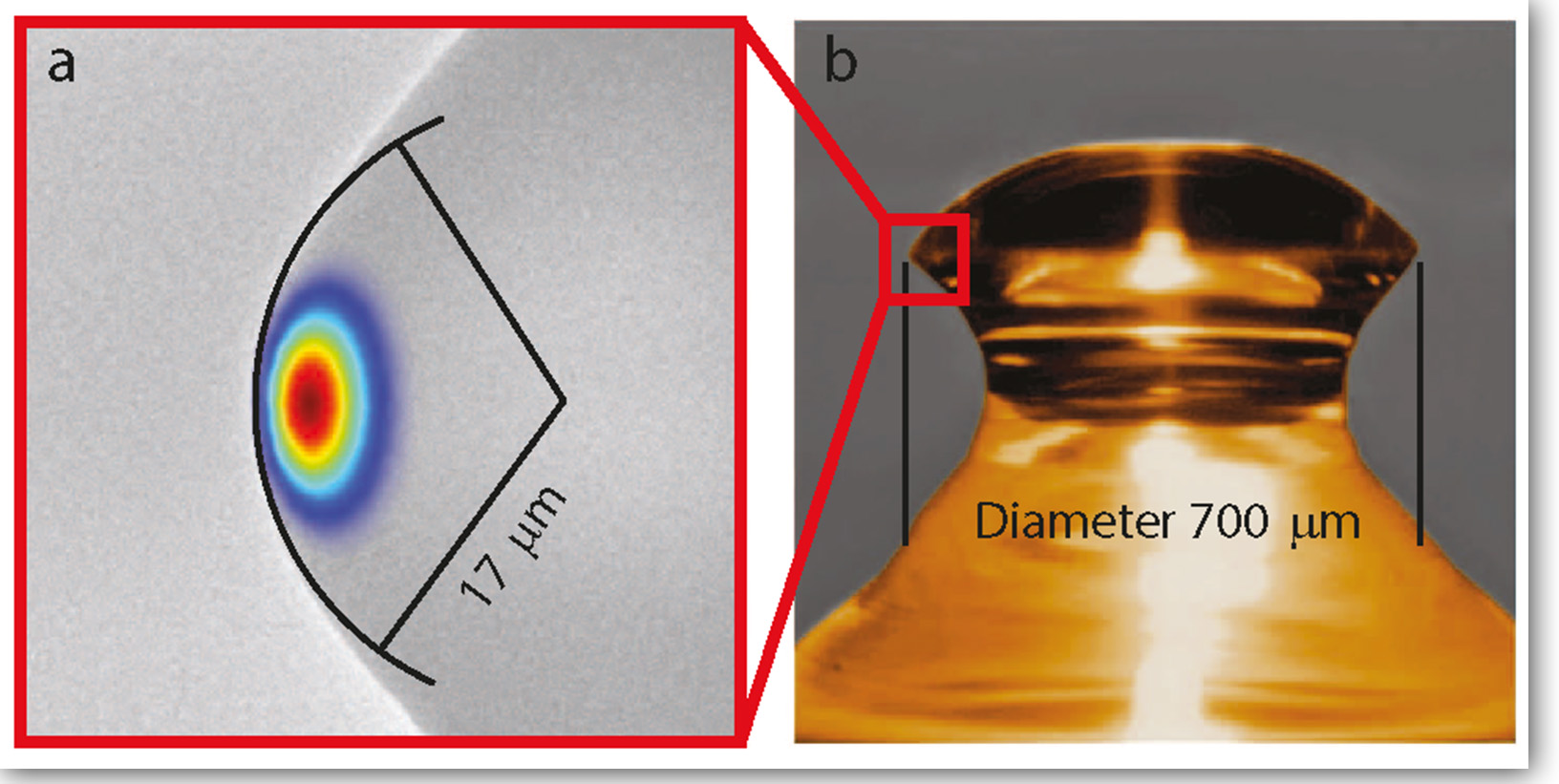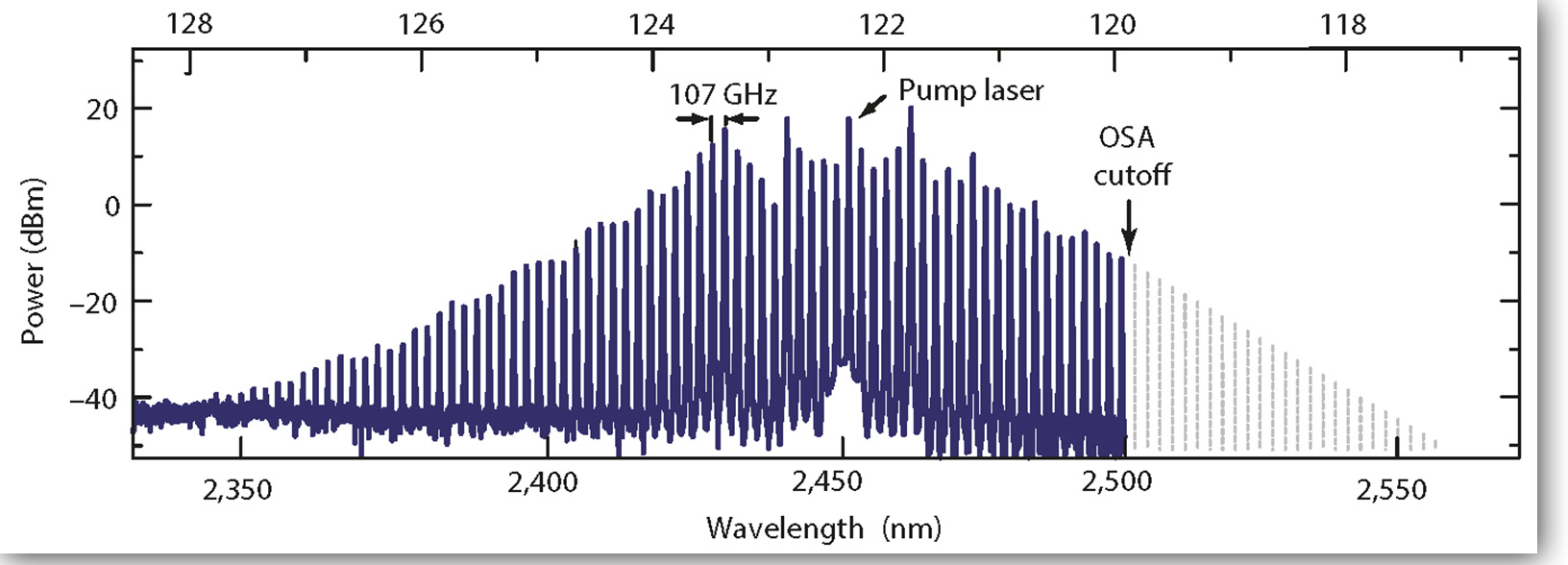The mid-infrared spectral range (2-20 µm) is of high interest as many molecules – with importance in, for example, medical diagnostics or pollution monitoring – show strong vibrational features in this wavelength region. Using optical frequency combs as molecular spectroscopy tools, it is possible to improve the recording speed, the resolution and the accuracy of Fourier spectrometers in the mid-infrared. In comparison to emerging techniques with optical frequency combs, the Kerr optical frequency combs generated in small crystalline micro-resonators are less bulky and not limited to specialists.
It is possible to create mid-infrared Kerr optical frequency combs with small crystalline micro-resonators by exciting whispering gallery modes. This is achieved by pumping an ultra-high Q crystalline microresonator made of magnesium fluoride by a continuous-wave in the mid-infrared. By a nonlinear process called four-wave mixing, a broad comb spectrum of 200nm and line spacing of 100GHz at wavelengths near 2.5µm is generated.
We choose magnesium fluoride for this mid-infrared frequency comb generation, first, due to the materials transparency window (120nm-8µm), which allows us to achieve ultra-high Q resonators in the mid-infrared as opposed to fused silica or quartz which absorb strongly above 2.2 µm, and second, due to its ability to generate optical frequency combs via cascaded four-wave mixing when choosing the right resonator design and proper engineering. The remarkable characteristics of such comb generators are their small size, large line-spacing, high power per comb line, and efficient conversion.
These broadband, wide spaced combs in the mid-infrared can then be used in a dual comb spectroscopy setup, where two combs with slightly different line-spacing are needed. The probe comb is send through a molecular gas cell, whereas the second comb acts as a local oscillator. The two combs are overlapped in the detector and the absorption spectrum therefore transferred from the optical to the radiofrequency domain, where it can be detected rapidly. Such miniaturized sources also hold much promise for on-chip frequency-comb spectrometers. The spectrum of the fundamental vibrations of liquid phase samples might be measured within a few nanoseconds with a similar refresh time.

Figure1: (a) Finite element simulation of the optical intensity profile of the fundamental whispering gallery mode over an SEM image (scale bar 10 µm) and (b) optical image of the 700 µm resonator. Picture taken from [4].

Figure 2: Frequency comb spectrum recorded by the OSA around 2.45 µm. Picture taken from [4].

Figure 3: “Dual Comb” spectroscopy scheme.
References
[1] F. Keilmann, C. Gohle, R. Holzwarth, Time-domain mid-infrared frequency-comb spectrometer. Opt. Lett. 29,1542 (2004).
[2] A. Schliesser, M. Brehm, F. Keilmann, D.W. van der Weide, Frequency-comb infrared spectrometer for rapid, remote chemical sensing. Opt. Express 13, 9029 (2005).
[3] I. Coddington, W. C. Swann, N. R. Newbury, Coherent Multiheterodyne Spectroscopy Using Stabilized Optical Frequency Combs. PRL 100, 013902 (2008)
[4] C.Y. Wang, T. Herr, P. Del’Haye, A.Schliesser, J.Hofer, R.Holzwarth, T.W.Hänsch, N.Picqué, T.J. Kippenberg, Mid-Infrared optical frequency combs at 2.5 µm based on crystalline microresonators. Nat.Commun. 4, 1345 (2013).